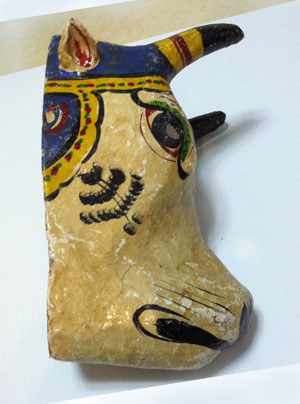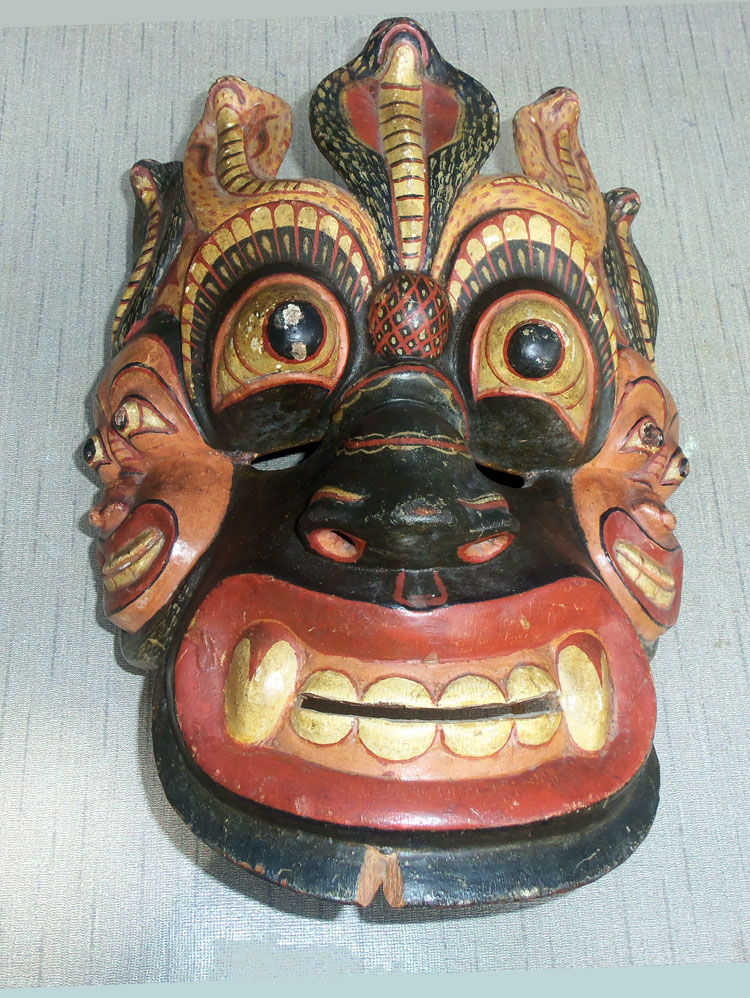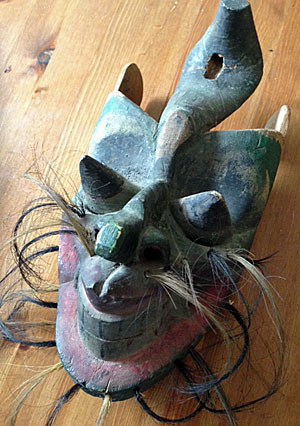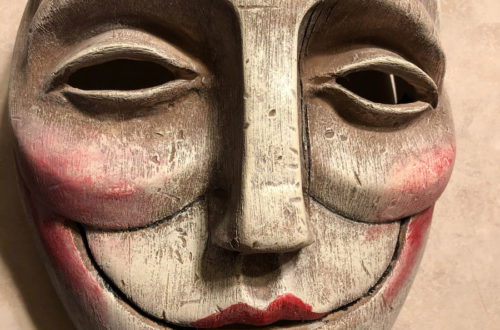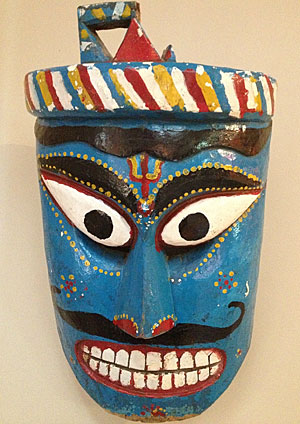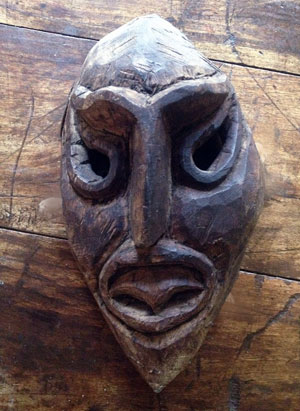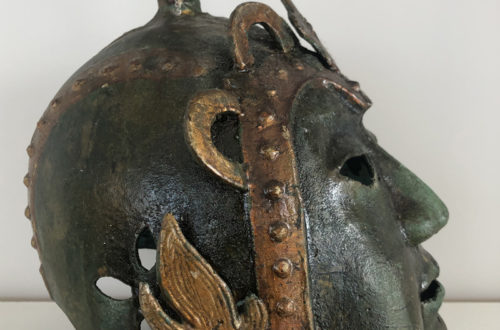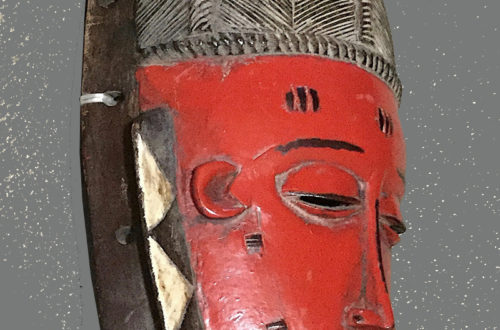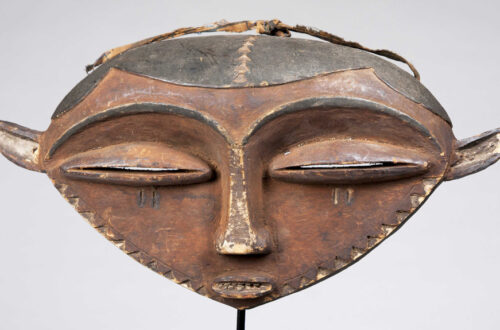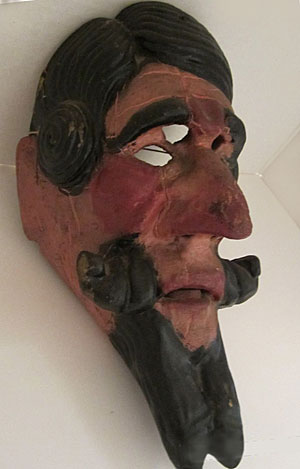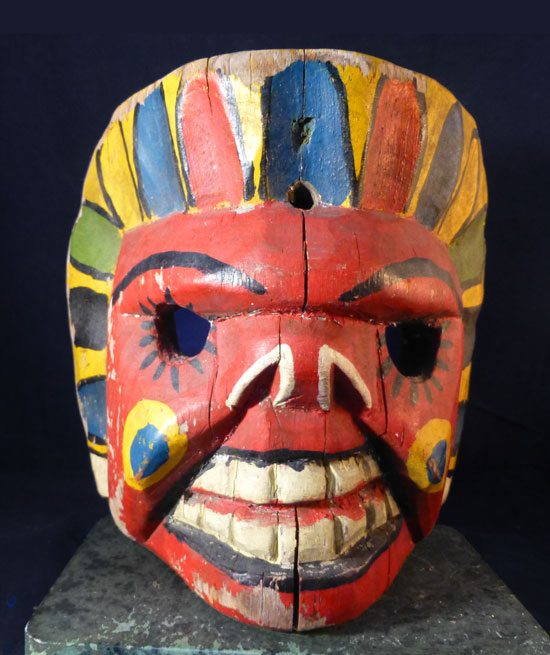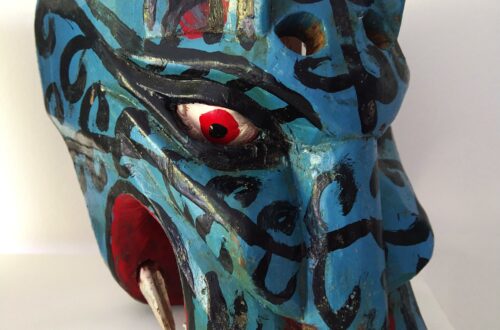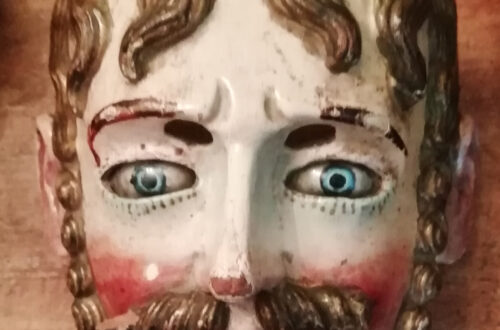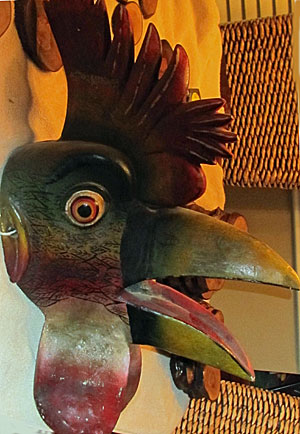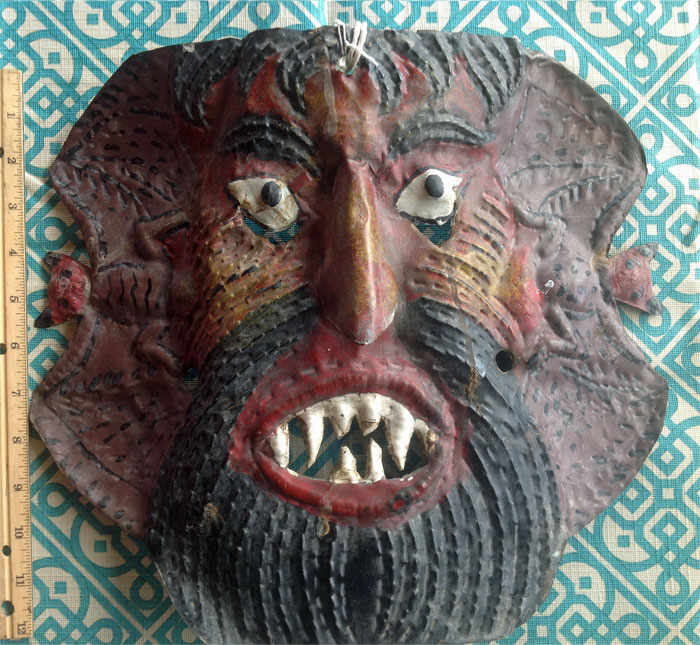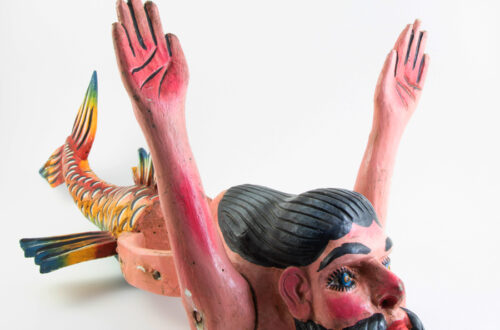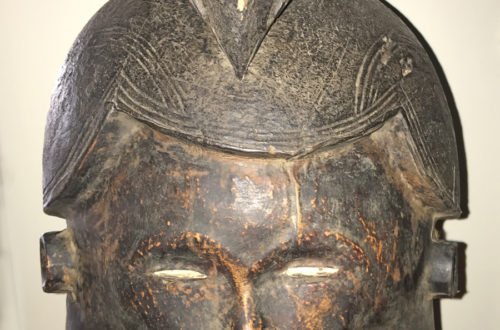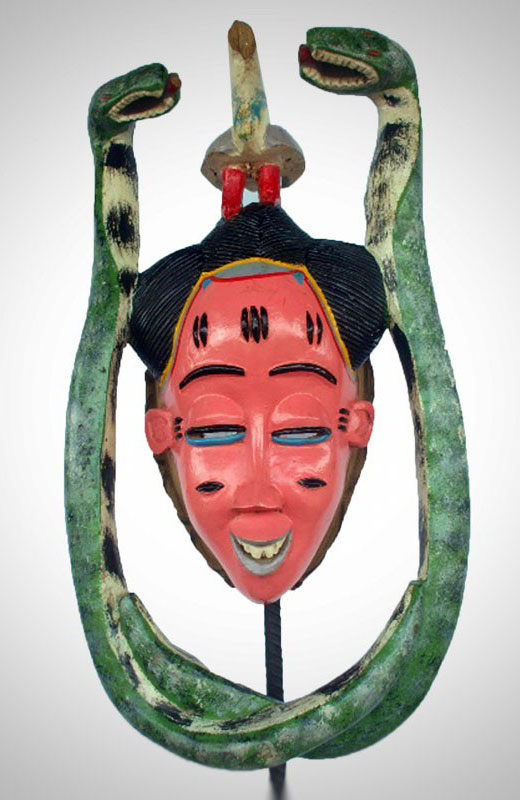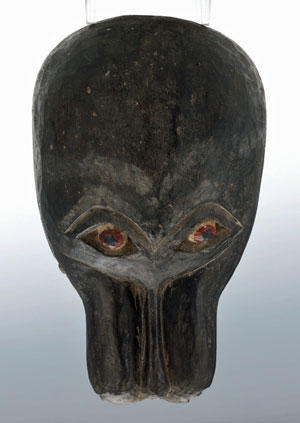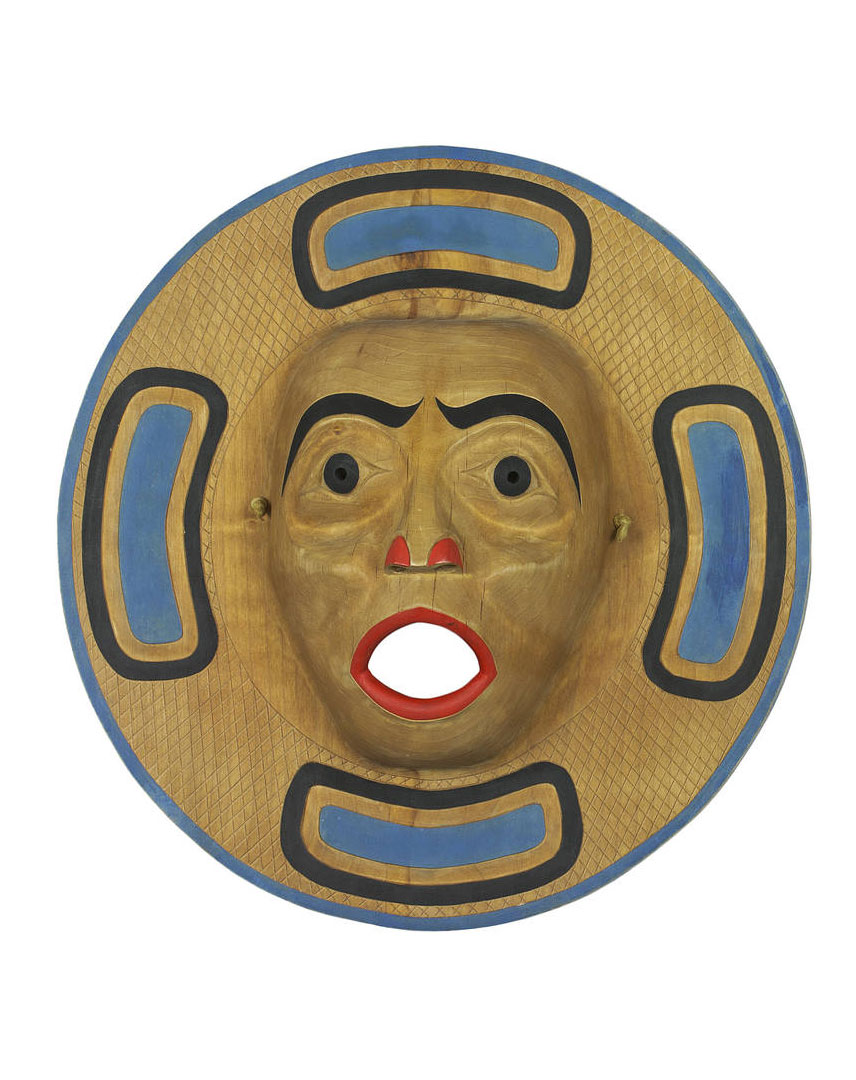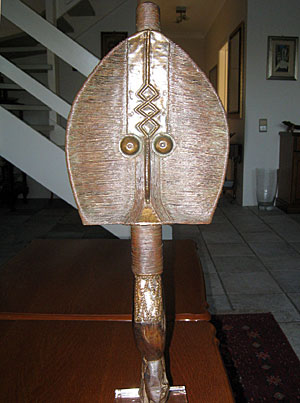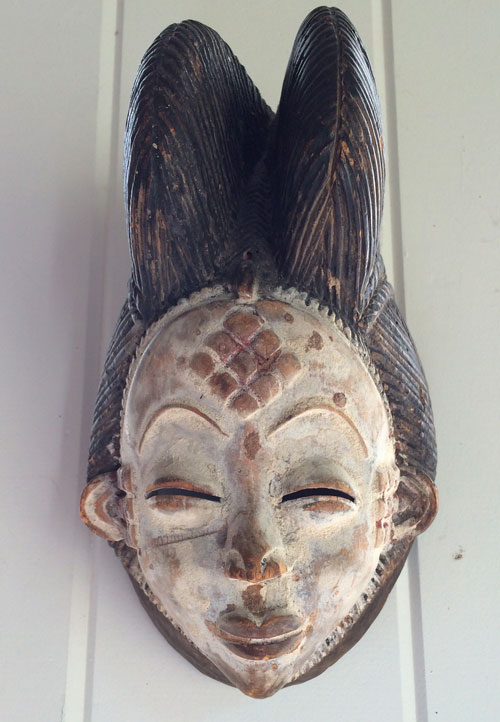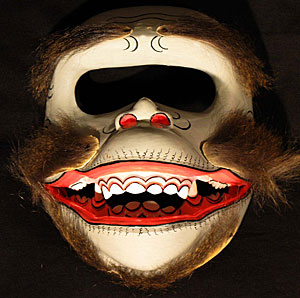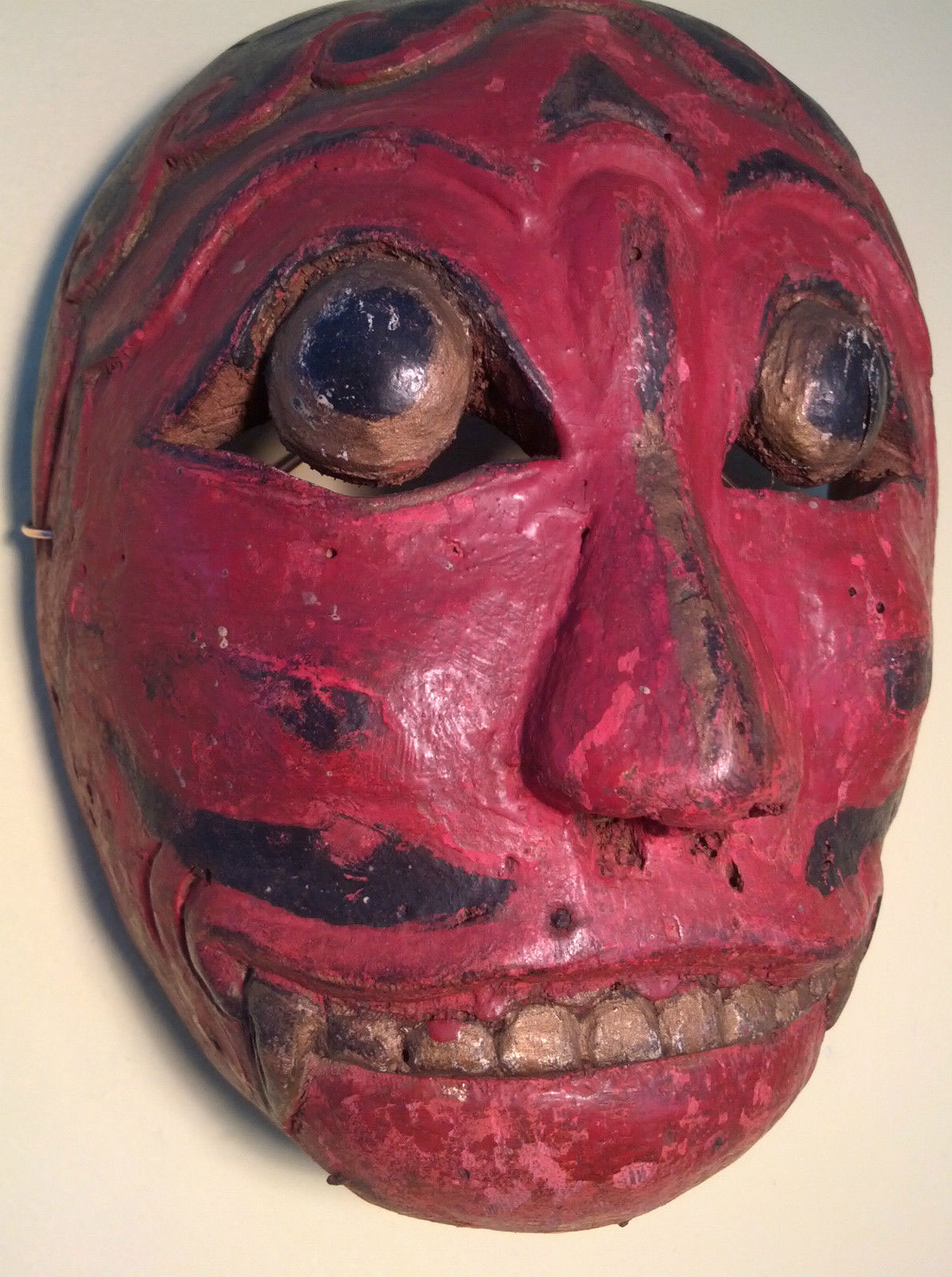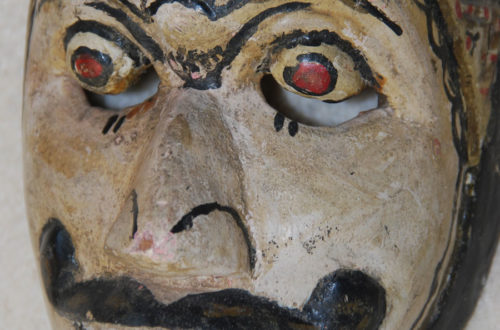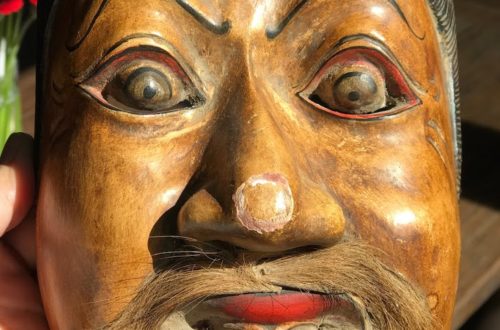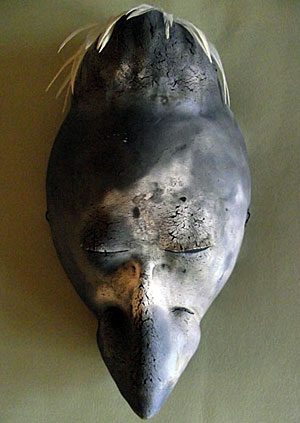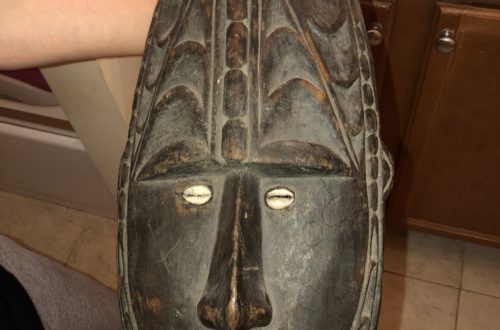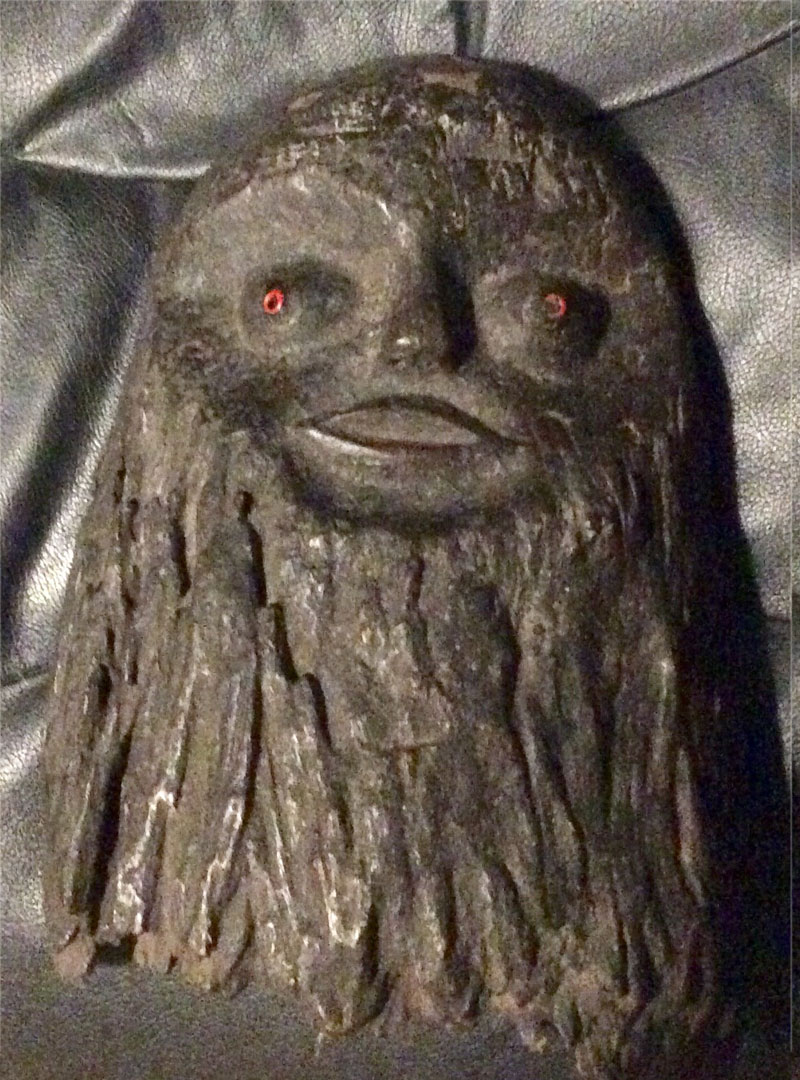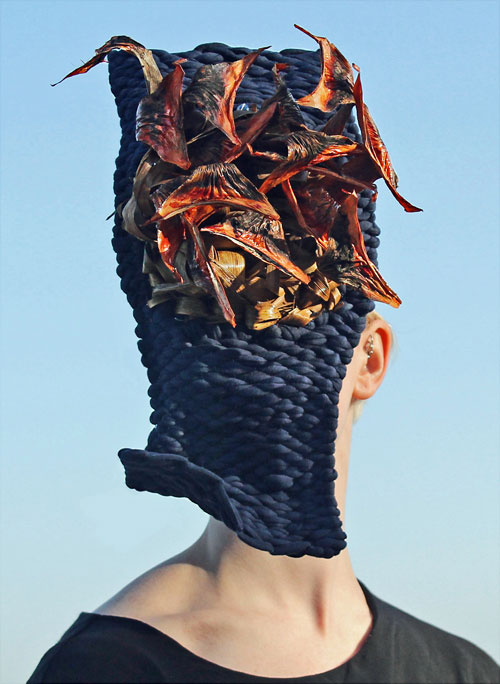Q: This papier mache mask was found at indoor flea market. Would like to know more about it. Thank you. Mickey, 561 A: Another Indian mask! In the previous post I expressed my disappointment that Indian masks were not more appreciated by collectors…
-
-
How do you find out about Indian masks?
Q: Here is a very heavy, 17-inch tall Indian mask carved out of a hunk of wood. What do you think… is this piece ethnographic or tourist? Nate, 560 A: Ethnographic Indian for sure. But I don’t know where in India it is from or what use it was intended for.
-
Traditional masquerade continues to evolve
In recent years Phyllis Galembo, Professor of Art at the University of Albany, has traveled around the world photographing traditional masquerade. She finds villages where the rituals and celebrations are still in use and she captures these beautiful performers on film. One of her books, Maske, published in 2010, is filled with photos from Africa and the Caribbean. The mask (on the left) is from an Aromgba village in Nigeria. Here are a few more of her pics.
-
Guatemalan masks have strong traditions
Q: Thoughts on this one? Is it turn of the century Guatemalan? The original eyes likely were glass. About 1/3 of the side of the mask once fall off and was glued back on. Would adding new glass eyes add value or subtracts? Nate, 558 A: It’s an old, used, classic Guatemalan probably from a lesser morreria, but I can’t see any initials.
-
Authentic or decorative– both can be desireable
Q: I got this big chicken in Mexico many years ago. Its 30 inches tall and 9 wide. Thanks for any info you might have. Jerry, 557 A: Decorative masks are not only made for the tourist trade in Mexico,
-
This African is still a mystery
A: You helped me a week ago with my African pig mask. I have another mask, but I see you only do one mask per person. How can I get you to look at another mask? Diane, 556 Q: I don’t do two or more in a row, but I’ll make an exception this time because I’m intrigued with this particular mask.
-
Shaman’s mask from the Far North
Q: The attached photos are of a mask I purchased from an estate in Maryland. I was told the previous owner had a few mask in her collection and other collectibles from Alaska. Not sure if it is Alaskan and the reason for sending you photos. The depiction of teeth is something common in many Alaskan masks. What are your thoughts. Alfonso, 555 A: I’m not sure either, but I’ll bet it’s from one of the indigenous people of Alaska, Siberia or Northern Canada.
-
Beautiful religious artifact
Q: Recently I purchased a mask from a local shop in Sydney which sells various goods from Oceania and Africa. The mask is made of wood covered with metal strips and wires (copper?). I like its look and enjoy having it in my house, and would be very grateful if you let me know if this mask is of any significance. Ted, 554 A: A very nice piece indeed, it is a reliquary figure from the Mahongwe people of Gabon, West Africa.
-
Masks are a big deal in Bali
Q: This mask has been in my family for many years and none of my living family knows anything about its origin. It is the size of an adult head. The materials appear to be on the front a light coloured wood, inside there is a wicker effect and black material. The jaw of the mask moves and appears to have steel pins and a reed effect on the inside. The hair appears to be made of animal hair. Anne, 552 A: The Topeng, or traditional dance dramas, are very popular in Bali, and your mask depicts one of many Bondres (comic characters) used in the performances.
-
The mask as a subject for art
Q: I would appreciate a brief description of the raku mask, it measures approximately 11″ x 6″ and was purchased at an estate sale. I am an artist and a mask collector. Ann, 552 A: As an artist and mask enthusiast it makes sense that you would be attracted to a beautiful piece of art such as this.
